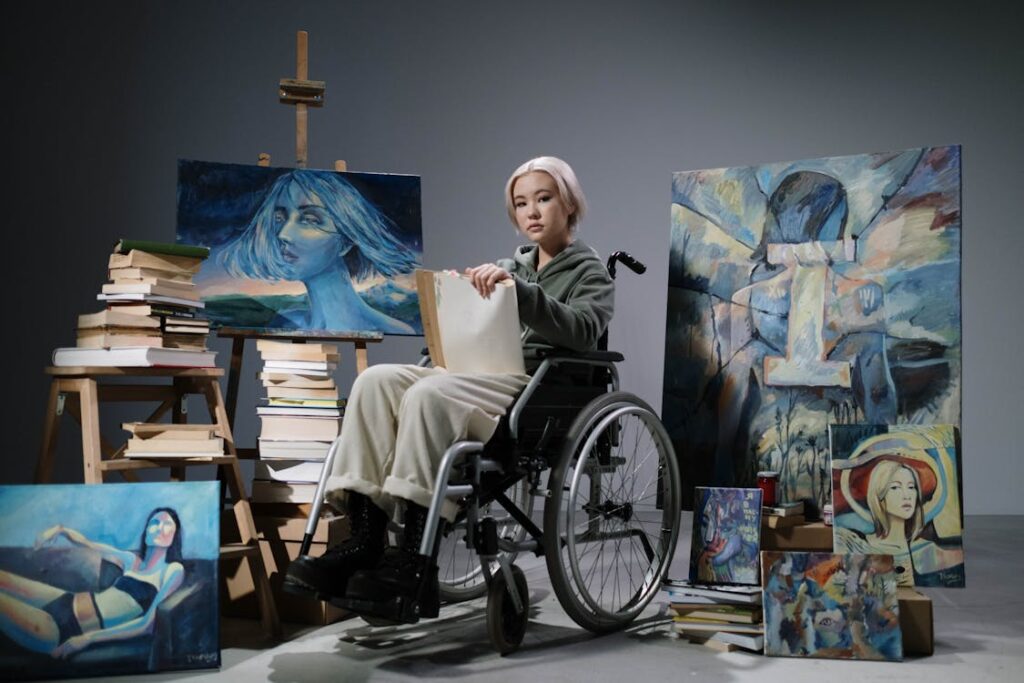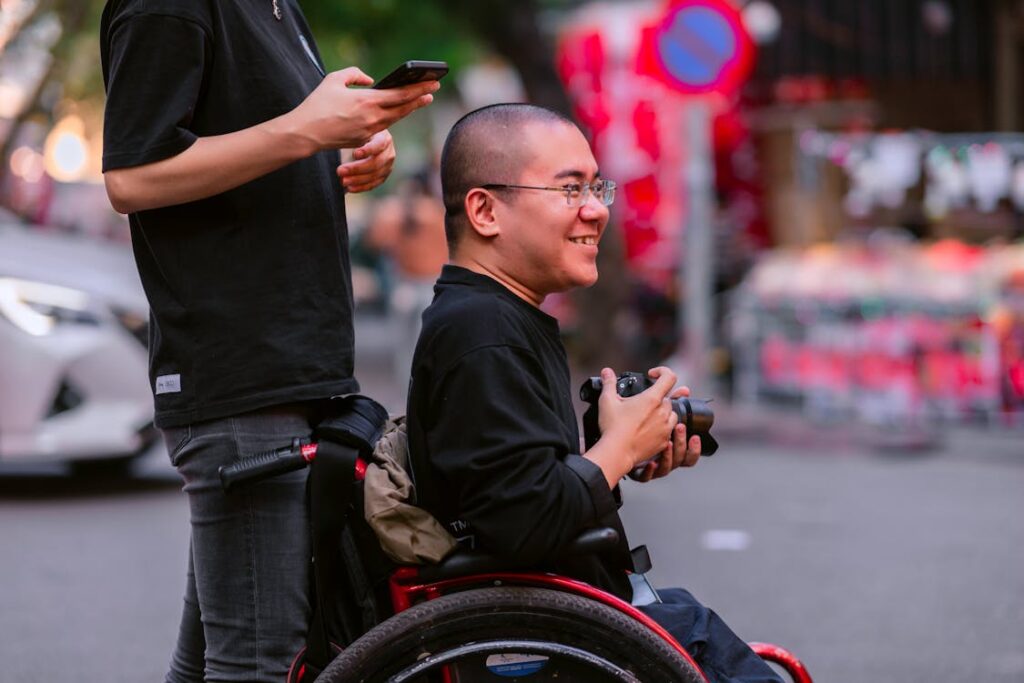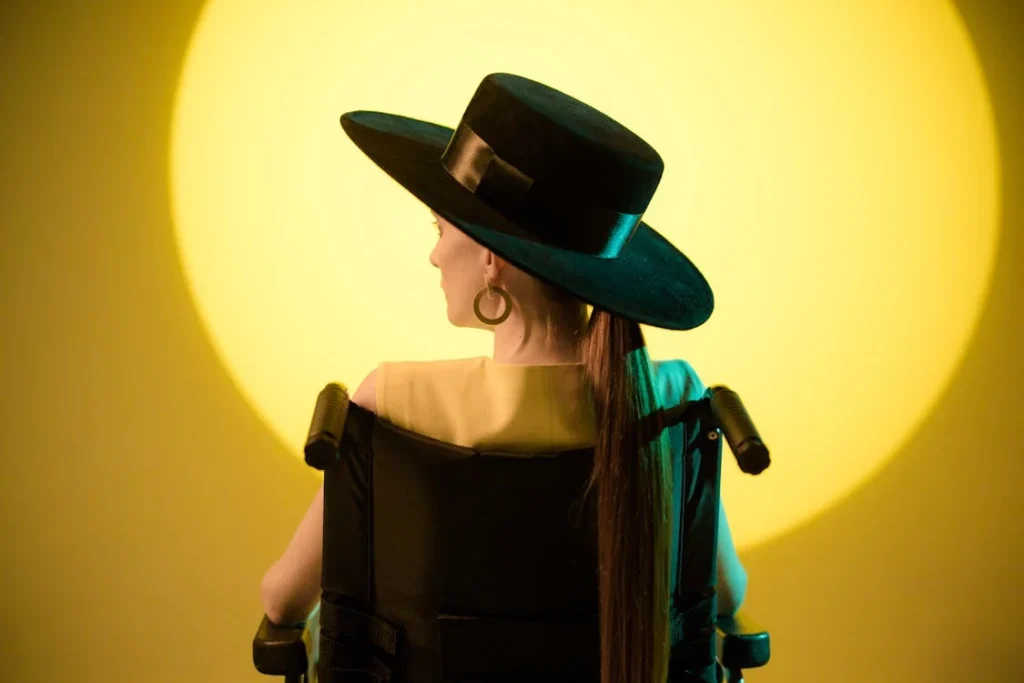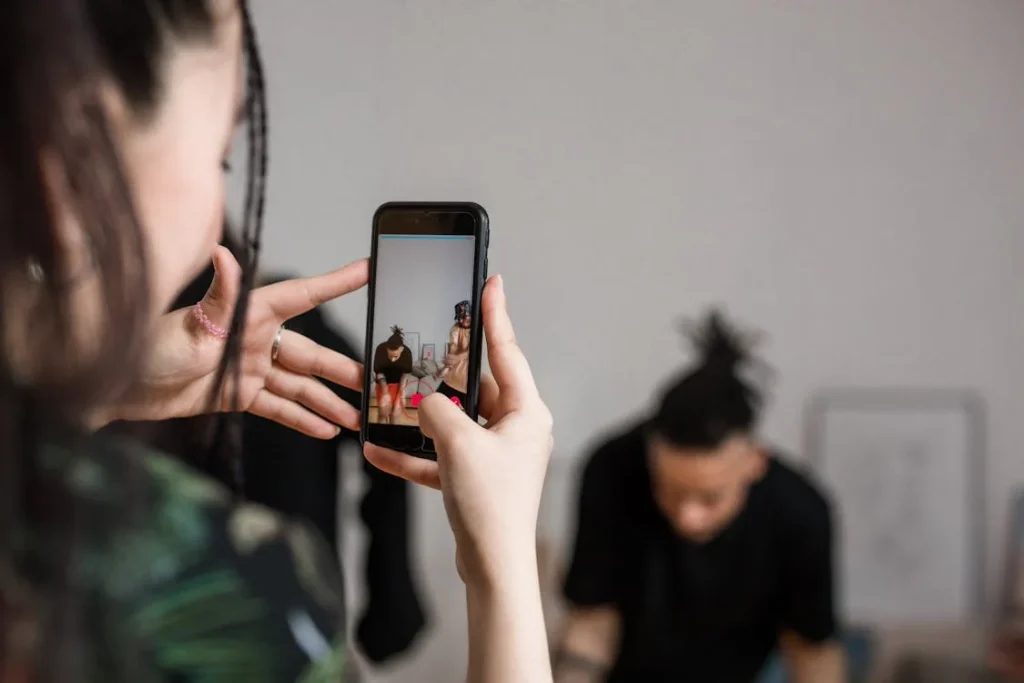Social media has given a voice to people who were often overlooked, and in recent years, disability influencers have emerged as powerful advocates for change. These individuals are using their platforms to share their stories, challenge misconceptions, and push for greater accessibility and inclusion worldwide. Through platforms like Instagram, YouTube, TikTok, and Twitter, they are reshaping the way society views disability—not as a limitation, but as a different way of experiencing the world.
Unlike traditional media, where disability representation was limited or often portrayed through stereotypes, social media allows people with disabilities to tell their own stories. They highlight daily experiences, share struggles and victories, and educate audiences on what true inclusivity looks like. Their impact goes beyond raising awareness; they are influencing policy, encouraging brands to be more inclusive, and proving that disability is not something to be hidden but embraced.
As disability influencers gain more recognition, their influence is shaping industries, from fashion and beauty to technology and healthcare. They are proving that representation matters and that having a diverse range of voices leads to a more inclusive world.

How Disability Influencers Are Changing Perceptions
Redefining Disability in the Public Eye
For decades, mainstream media has often portrayed disability in two extreme ways: as either a tragedy or a source of inspiration. These limited narratives failed to capture the full range of experiences that people with disabilities have.
Disability influencers are changing this by presenting themselves as real individuals with ambitions, humor, relationships, and daily routines just like everyone else.
By sharing their lives on social media, they are normalizing disability and breaking down misconceptions. Many influencers openly discuss topics that were once considered taboo, such as accessibility issues, dating with a disability, and workplace discrimination.
By speaking honestly about their experiences, they encourage society to see people with disabilities not as objects of pity or admiration, but as equals who deserve respect and inclusion.
One of the most powerful aspects of disability influencers is their ability to control their own narrative. Unlike traditional media, where representation is filtered through directors, editors, or corporations, social media allows disabled creators to present themselves on their own terms.
They can share their perspectives without interference, making their voices more authentic and impactful.
Challenging Stereotypes and Misconceptions
Disability influencers are also tackling harmful stereotypes that have existed for far too long. Many people assume that individuals with disabilities lead lives filled with suffering or that they are constantly in need of help.
Social media allows influencers to challenge these beliefs by showcasing independence, confidence, and success.
For instance, athletes with prosthetic limbs demonstrate their strength and agility, proving that disability does not mean weakness. Beauty and fashion influencers highlight adaptive clothing and accessible beauty products, showing that style and self-expression are for everyone.
Others focus on career advice, advocating for workplace inclusivity and proving that having a disability does not limit professional success.
Another common misconception they address is the idea that disability is always visible. Many influencers with invisible disabilities use their platforms to educate audiences about conditions that may not be immediately apparent, such as chronic illnesses or neurological disorders.
By shedding light on these issues, they help create a broader understanding of the diverse experiences within the disability community.
Encouraging Self-Acceptance and Confidence
One of the most meaningful contributions of disability influencers is the way they empower others within the community. Many people with disabilities grow up feeling isolated, especially if they do not see others like them represented in media.
Social media provides a space where individuals can connect, share experiences, and find support.
Seeing someone with a similar disability thrive can be life-changing. It reassures people that they are not alone and that their disability does not define their worth. Many influencers actively engage with their audiences, offering advice, encouragement, and even mentorship.
This representation is particularly important for younger generations. A child with a prosthetic limb who sees an influencer confidently showcasing their own prosthetic may feel more comfortable embracing their own differences.
Representation helps reshape self-perception, encouraging people with disabilities to take pride in who they are rather than feeling the need to hide or conform.

The Impact of Disability Influencers on Industries and Policy
Pushing for Accessibility in Fashion, Beauty, and Lifestyle
Disability influencers are not just changing perceptions—they are actively shaping industries by demanding inclusivity in fashion, beauty, and lifestyle.
For years, mainstream brands ignored the needs of people with disabilities, offering few adaptive clothing options, inaccessible makeup packaging, and a lack of representation in advertising. Today, thanks to the voices of disability influencers, that is rapidly changing.
Fashion influencers with disabilities have played a major role in promoting adaptive clothing—garments designed with accessibility in mind, such as magnetic buttons, Velcro closures, and easy-to-wear designs.
Their influence has encouraged major brands to rethink their approach. Companies like Tommy Hilfiger, Nike, and Zappos now offer adaptive clothing lines, making fashion more inclusive than ever before. These influencers prove that style is for everyone, regardless of physical ability.
The beauty industry is also undergoing a transformation. Influencers with mobility challenges have highlighted how traditional makeup packaging can be difficult to open, leading brands to design more accessible products.
Others have pushed for more diverse representation in beauty campaigns, ensuring that models with disabilities are seen on runways and in advertisements.
Lifestyle and travel influencers have also made a significant impact by showcasing the challenges of navigating inaccessible spaces.
By documenting their experiences in hotels, public transport, and tourist attractions, they are pressuring companies and governments to make improvements.
Their work has led to better accessibility in public spaces, improved policies for airline travel, and greater awareness of the barriers that still exist.
Influencing Tech and Assistive Device Innovation
The tech industry has also been influenced by disability influencers, particularly in the development of assistive devices and digital accessibility.
Many influencers test and review prosthetic limbs, wheelchairs, and other adaptive technologies, providing valuable feedback that helps companies refine their products.
The rise of smart prosthetics and AI-driven assistive devices has been shaped, in part, by public discussions initiated by influencers.
By sharing their experiences with different technologies, they help researchers understand what works, what doesn’t, and what needs improvement.
This direct feedback loop between users and developers ensures that assistive devices are not just functional but also comfortable and tailored to real-life needs.
Digital accessibility is another area where disability influencers have made an impact. Many have called out social media platforms, websites, and apps that fail to provide accessibility features, such as screen reader compatibility, captioning for videos, and color contrast adjustments.
In response to these demands, platforms like Instagram and TikTok have introduced automatic captions and other accessibility features, making digital spaces more inclusive for all users.
Advocating for Policy and Legal Reforms
Beyond influencing industries, disability influencers are playing a key role in shaping policies and legal reforms. Many work alongside disability rights organizations to advocate for stronger accessibility laws, equal employment opportunities, and better healthcare policies.
For example, influencers have been instrumental in campaigns for improved public transportation access, pushing for wheelchair-friendly buses, ramps in public spaces, and accessible sidewalks.
Others have spoken out about workplace discrimination, urging companies to implement fair hiring practices and reasonable accommodations for employees with disabilities.
The power of social media allows these advocacy efforts to reach policymakers directly. When an influencer highlights an accessibility issue and their post goes viral, it can lead to real-world changes.
Governments, businesses, and institutions are now paying closer attention to the voices of disability influencers, recognizing that inclusion is not just an option—it is a necessity.

The Role of Social Media in Amplifying Disability Voices
Creating Communities and Fostering Connections
One of the most significant contributions of disability influencers is the way they bring people together. Social media has become a space where individuals with disabilities can connect, share experiences, and find support. For many, this is life-changing.
Before the rise of digital platforms, people with disabilities often felt isolated, especially if they lived in areas with limited accessibility or few others who shared similar experiences.
Social media has removed these barriers, allowing individuals from all over the world to form communities.
Whether through Instagram hashtags, Facebook groups, or TikTok challenges, disability influencers have created spaces where people can exchange advice, discuss accessibility issues, and celebrate achievements.
These communities provide more than just emotional support—they also serve as valuable resources. People with new disabilities can turn to influencers for guidance on everything from navigating daily life with a prosthetic to finding disability-friendly job opportunities.
By sharing their knowledge, influencers empower others to overcome challenges and live more independently.
Using Virality to Drive Change
The power of social media lies in its ability to make messages go viral. When a disability influencer shares an experience—whether it’s a travel accessibility issue, discrimination in a workplace, or a company’s failure to accommodate disability needs—it has the potential to reach millions.
This level of exposure forces businesses, policymakers, and the general public to pay attention.
For example, when influencers highlight inaccessible venues or poor airline treatment of wheelchair users, it often sparks public outrage. These viral moments create pressure for companies to address the issue, sometimes leading to direct policy changes.
The influence of social media has made businesses more accountable, as they know that failing to be inclusive can damage their reputation.
On the other hand, when brands and organizations do make inclusive changes, disability influencers amplify those successes, encouraging others to follow suit. By celebrating companies that prioritize accessibility, they set a new standard for industries to aspire to.
Educating the Public Through Storytelling
Disability influencers are natural storytellers. Through vlogs, Instagram posts, and TikTok videos, they educate audiences about what it truly means to live with a disability.
Many share personal stories—both struggles and triumphs—that challenge assumptions and encourage people to see disability through a new lens.
This type of storytelling is incredibly effective. Unlike traditional awareness campaigns that often rely on statistics, disability influencers bring issues to life in a relatable way.
A single video of someone struggling to board an inaccessible train can have a far greater impact than a report filled with data. By putting real faces to real problems, influencers make disability advocacy more personal and urgent.
At the same time, they also highlight the joys of life with a disability. Many influencers share moments of happiness, humor, and success, proving that disability is not a tragedy but simply a different way of navigating the world. This balanced representation is essential in breaking down harmful stereotypes.
The Future of Disability Advocacy Online
As social media continues to evolve, disability influencers will only become more influential. Platforms are increasingly recognizing the importance of inclusivity, introducing features like automatic captions, AI-powered accessibility tools, and adaptive user interfaces.
With these advancements, it will become even easier for disabled creators to share their voices.
More importantly, disability influencers are inspiring the next generation of advocates. Younger individuals with disabilities are growing up seeing representation online, which encourages them to speak up, demand change, and push for an even more inclusive future.
The work being done today is laying the foundation for a world where accessibility is not an afterthought but a fundamental right.

The Economic Influence of Disability Influencers
How Brands Are Partnering with Disability Advocates
As disability influencers gain more visibility, brands are realizing the value of working with them. Companies that once overlooked the disability community are now actively seeking collaborations, recognizing both the social and economic impact of inclusive marketing.
These influencers are not just raising awareness—they are reshaping industries by proving that accessibility is good for business.
Major brands in fashion, beauty, technology, and travel have begun partnering with disability influencers to create more inclusive products.
Instead of simply marketing to people with disabilities, companies are involving them in product design, ensuring that their needs are considered from the start. This shift is significant because it moves beyond token representation and toward real accessibility improvements.
For example, beauty brands that previously ignored disabled consumers now work with influencers to design packaging that is easier to open for people with limited hand mobility.
Fashion companies are introducing adaptive clothing lines after consulting influencers who understand the daily challenges of dressing with a disability.
Even tech companies are incorporating accessibility features into their products, driven by influencer-led discussions on digital inclusion.
By working with disability influencers, brands are not only expanding their market reach but also gaining consumer trust. Audiences today expect authenticity, and influencers who genuinely use and believe in a product have a greater impact than traditional advertising.
This has led to a new era of marketing—one that values inclusivity, representation, and the voices of those who have historically been excluded.
The Buying Power of the Disability Community
Beyond brand partnerships, disability influencers are shedding light on an often-overlooked fact: the disability community has significant economic power.
In many countries, people with disabilities and their families represent a substantial portion of consumer spending. Companies that ignore accessibility are missing out on a large and loyal customer base.
Disability influencers have made businesses realize that accessibility is not just about compliance—it is about opportunity.
When a company invests in making its products or services accessible, it is not only benefiting people with disabilities but also improving user experience for all customers.
For instance, voice-activated devices originally designed for individuals with mobility impairments are now widely used by the general public.
This economic influence extends beyond consumer products. Influencers are also changing the job market by advocating for more inclusive hiring practices.
Many have spoken openly about employment discrimination and the barriers they face in the workplace. Their advocacy has encouraged companies to improve hiring policies, offer remote work options, and invest in workplace accommodations that allow employees with disabilities to thrive.
Creating Financial Independence Through Social Media
For many people with disabilities, traditional employment can be challenging due to accessibility barriers, discrimination, or health limitations. Social media has opened up new opportunities, allowing disability influencers to build careers on their own terms.
By monetizing their content through brand partnerships, sponsorships, and digital products, many influencers have achieved financial independence.
This shift is significant because it challenges the idea that people with disabilities are dependent on others. Instead, these influencers are business owners, entrepreneurs, and content creators who are thriving in the digital economy.
They are proving that with the right tools and opportunities, people with disabilities can be leaders in their fields.

The Future of Disability Advocacy in the Digital Age
The Growing Influence of Disability Voices in Politics and Policy
As social media continues to evolve, disability influencers are gaining not just commercial influence but also political power.
In many countries, disability rights activists have used online platforms to push for policy changes, influence elections, and hold governments accountable for accessibility issues.
Their reach extends far beyond personal storytelling—many are now shaping laws, advocating for better infrastructure, and demanding equal rights in healthcare, employment, and education.
One of the key ways social media has changed advocacy is through direct engagement with policymakers. In the past, lobbying for disability rights required in-person meetings and formal petitions.
Now, a viral tweet or Instagram campaign can bring immediate attention to an issue. Politicians and lawmakers are under increasing pressure to respond when disability influencers highlight gaps in accessibility, discrimination, or failures in government services.
Influencers have also played a role in ensuring that elections are accessible. Many have spoken out about the lack of accessible polling stations, voting machines, and digital platforms for people with disabilities.
Their advocacy has led to improvements in some countries, with election commissions introducing sign language interpreters, braille ballots, and online voting options to accommodate a broader range of voters.
The Role of AI and Technology in Disability Advocacy
The future of disability advocacy will also be shaped by artificial intelligence (AI) and other emerging technologies.
Social media platforms are beginning to integrate AI-powered accessibility tools, such as automatic captions, voice-controlled interfaces, and AI-driven sign language translation.
These advancements will make it even easier for disabled influencers to create content and engage with their audiences.
At the same time, AI raises ethical concerns that disability influencers are addressing. For instance, automated hiring tools have been shown to discriminate against candidates with disabilities due to biases in data training.
Influencers are using their platforms to call attention to these issues, urging tech companies to develop more inclusive AI systems.
Virtual and augmented reality (VR/AR) also hold promise for improving accessibility. Some influencers are experimenting with VR-based advocacy, creating immersive experiences that allow able-bodied individuals to understand the challenges of navigating inaccessible spaces.
This kind of storytelling has the potential to change perspectives in powerful ways, making disability inclusion a more urgent priority.
The Next Generation of Disability Advocates
Perhaps the most exciting development in the digital disability movement is the rise of younger advocates. Growing up in a world where disability representation is more visible than ever, the next generation of influencers is more confident, outspoken, and determined to create change.
Young people with disabilities are using platforms like TikTok and YouTube to challenge ableism, educate their peers, and redefine what disability means in the modern world. They are not waiting for brands, governments, or media companies to catch up—instead, they are setting the agenda themselves.
As the digital landscape continues to expand, the voices of disability influencers will become even more powerful. They are not only shaping online conversations but also transforming real-world policies, industries, and social attitudes.
Their impact proves that disability advocacy is no longer limited to traditional activism—it is a global movement fueled by technology, storytelling, and the unwavering belief in a more inclusive future.

The Challenges Disability Influencers Face and How They Overcome Them
Battling Online Harassment and Ableism
Despite their growing influence, disability influencers often face significant challenges, including online harassment and ableism. Social media can be a powerful tool for advocacy, but it also exposes creators to negative comments, discrimination, and trolling.
Many influencers with disabilities receive messages that question their abilities, mock their appearance, or doubt their need for accommodations.
Ableism—prejudice against people with disabilities—manifests in many ways online. Some users accuse influencers of exaggerating their conditions, while others make insensitive jokes about their experiences.
In some cases, influencers are even accused of “faking” their disabilities, an especially harmful form of discrimination that invalidates their lived experiences.
To counteract this, many disability influencers have built strong online communities that provide support and encouragement. They educate their followers on how to recognize and challenge ableist behavior, turning negativity into an opportunity for learning and advocacy.
Some influencers also use moderation tools, blocking or muting harmful users to create safer spaces for discussions about disability.
The Struggle for Equal Pay and Brand Recognition
Another major challenge disability influencers face is unequal pay. Many brands are eager to work with them for diversity campaigns, but they often offer lower payments than they do for able-bodied influencers with similar audience sizes.
Some companies see disability representation as a form of charity rather than a valuable business opportunity, which leads to influencers being underpaid or expected to promote brands for free.
This disparity reflects a broader issue of economic inequality for people with disabilities. However, disability influencers are pushing back, demanding fair pay and equal treatment in the influencer marketing industry.
By publicly discussing pay gaps and refusing unpaid work, they are setting new standards and ensuring that future disability creators are valued just as much as their able-bodied counterparts.
Many influencers are also choosing to work with brands that align with their values—companies that genuinely care about accessibility rather than just using diversity as a marketing tool.
By carefully selecting partnerships, they are ensuring that their advocacy efforts remain authentic and impactful.
Navigating Platform Limitations and Accessibility Barriers
Ironically, many social media platforms still have accessibility issues, making it difficult for disability influencers to engage with their audiences fully.
Features like automatic captions, text-to-speech, and screen reader compatibility are improving, but they are not yet standard across all platforms.
For influencers with visual or mobility impairments, navigating these barriers can be frustrating. Some social media interfaces are not designed with accessibility in mind, making it harder for certain users to create content efficiently.
Additionally, algorithm biases sometimes limit the visibility of disability-related content, pushing it down in rankings or flagging it as “sensitive” due to misunderstanding of disability topics.
Despite these challenges, influencers continue to innovate, finding creative ways to share their stories. They collaborate with developers to push for better accessibility features and educate their audiences on how to make content more inclusive.
Their persistence ensures that the digital space will continue to evolve to accommodate all users.
Balancing Advocacy and Personal Life
Being a disability influencer is more than just creating content—it often means constantly educating others, fighting for representation, and responding to ableist attitudes.
This can take a mental and emotional toll. Many influencers struggle with the pressure to always be an advocate, even when they just want to share their personal experiences or everyday joys.
The expectation to educate others can be exhausting, especially when influencers have to repeatedly explain basic accessibility issues or defend their need for accommodations.
Some influencers set boundaries by limiting how much they engage in debates or by taking breaks from social media to protect their mental well-being.
At the same time, many find purpose and fulfillment in their work. Knowing that their content inspires others, drives real change, and creates a more inclusive world makes the challenges worth it.
By setting boundaries and prioritizing self-care, disability influencers continue to use their platforms effectively while also ensuring their own well-being.
Conclusion
Disability influencers are transforming the way society views disability, challenging stereotypes, and advocating for real change. Through social media, they have built powerful communities, educated the public, and pushed industries toward greater inclusivity. Their impact extends beyond awareness—they are influencing policies, improving accessibility, and reshaping entire markets.
Despite facing online harassment, pay gaps, and platform accessibility barriers, these influencers continue to break barriers and inspire millions. They are proving that disability is not a limitation but a unique perspective that enriches every aspect of society. By sharing their experiences authentically, they empower others with disabilities to embrace their identities and demand the respect they deserve.
As the digital landscape evolves, disability influencers will play an even greater role in shaping global conversations. Their voices will continue to push for a world where accessibility is not an afterthought but a fundamental right. The work they do today is laying the foundation for a future where disability representation is no longer a rarity but a norm, ensuring that every voice, regardless of ability, is heard and valued.



